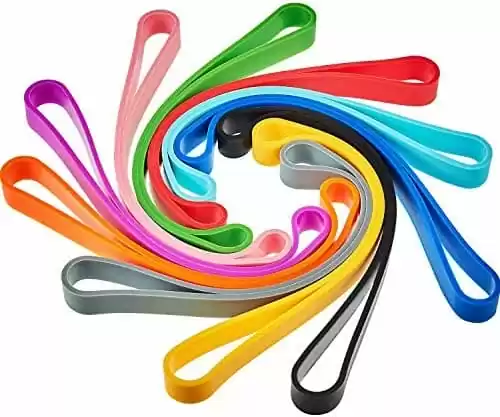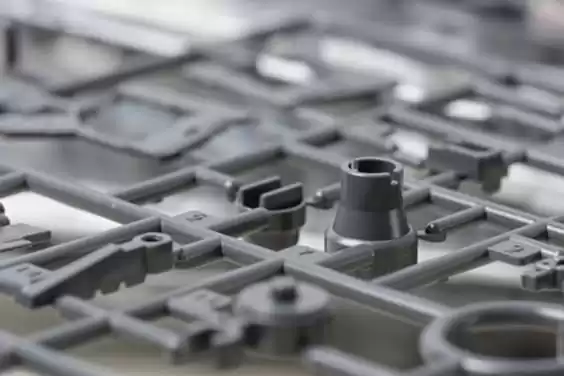Introduction:
Plastic injection molding is an efficient and widespread production method in which molten plastic is injected into molds to form intricate, precise shapes for various consumer goods. It plays an integral part in manufacturing household items, electronics devices, automotive components and more – not to mention numerous benefits for manufacturers in consumer goods manufacturing industries like this one. In this article, we’ll look into its importance and benefits when applied to consumer product production.

II. Cost-Effective Production
A. Explanation of cost-effectiveness in high-volume production:
Plastic injection molding is highly cost-effective, particularly in high-volume injection molding production scenarios. The molding processes allow for efficient and rapid production cycles, resulting in a higher output of finished products within a shorter timeframe. The ability to produce a large number of parts in a single molding cycle significantly reduces production costs per unit, making it an economical choice for consumer goods manufacturers.
B. Minimization of Material Waste and Lower Production Costs:
Injection molding can significantly reduce material waste due to its precise control over how much plastic is injected into each mold. Molds are designed so they produce identical parts, eliminating additional machining or assembly processes thereby contributing to material cost reductions as well as cost savings overall in production.

C. Comparison to Other Manufacturing Processes:
When compared with many other manufacturing processes, plastic molding often proves more cost-effective. Where processes such as CNC machining or 3D printing may prove costly and time-consuming for high-volume production runs, injection molding offers faster production cycles, lower labor costs, and better material utilization – features that make it the preferred option among consumer goods manufacturers seeking cost-efficient production solutions.
III. Design Flexibility and Complex Geometry
A. Description of Design Flexibility and Customization Options:
Plastic injection molding offers unparalleled design flexibility, enabling manufacturers to craft personalized consumer goods that suit specific consumer needs and preferences. The process can accommodate a range of design requirements such as intricate shapes, specific sizes, and complex features – providing designers with the freedom to explore creative potential while tailoring products specifically to individual consumer preferences.

B. Ability to Produce Complex Designs:
Injection molding excels at producing consumer parts goods with intricate and complex designs that would be difficult or impossible with other manufacturing methods. Molten plastic is injected into the mold with great accuracy, replicating intricate details and precise geometries perfectly – opening up endless opportunities for creating visually appealing yet functionally superior products.

C. Utilization of computer-aided design (CAD) software:
Computer-aided design (CAD) software makes the design process for injection molding much more efficient, providing designers with the tools they need to create, refine, and visualize designs before proceeding into manufacturing. Furthermore, this type of software permits precise adjustments, measurements, simulations, and optimization ensuring the final product matches both desired specifications and design intent.
IV. Superior Quality and Consistency
A. Control over manufacturing parameters for tight tolerances:
Plastic injection molding process offers precise control over manufacturing parameters, including temperature, pressure, and cooling time. This level of control allows for the production of parts with tight tolerances, ensuring the dimensional accuracy and precision of the final products. Manufacturers can achieve consistent and high-quality parts that meet the specific requirements of consumer goods.

B. Replication of parts with accuracy and minimal variations:
Injection molding ensures the replication of parts with accuracy and minimal variations. Once the mold is set up, each part produced is virtually identical to the others. This consistency eliminates variations that may affect the functionality or fit of the product. Manufacturers can rely on injection molding to consistently produce parts that meet the design specifications, resulting in a uniform and reliable product line.

C. Enhanced consumer experience with reliable performance:
Superior quality and consistency achieved through injection molding translate into an enhanced consumer experience. Consumers can trust that the products they purchase will perform reliably and consistently. Injection-molded parts exhibit the desired physical and chemical properties, ensuring durability, functionality, and longevity. This reliability contributes to customer satisfaction and builds trust in the brand.
V. Wide Range of Material Options
A. Explanation of various plastic materials supported by injection molding:
Injection molding supports a wide range of plastic material, offering manufacturers flexibility in choosing the most suitable material for their consumer goods. This includes common thermoplastics such as polyethylene, polypropylene, polystyrene, and polyvinyl chloride (PVC), as well as engineering plastics like ABS, nylon, and polycarbonate. Each material possesses unique properties that can be leveraged to meet specific product requirements.

B. Suitability for different consumer goods based on material properties:
The suitability of different plastic materials for consumer goods is determined by their specific properties. For example, the strength and impact resistance of ABS make it suitable for durable products like automotive components. Polypropylene’s chemical resistance makes it ideal for containers and packaging. By selecting the appropriate material, manufacturers can ensure that the final products exhibit the desired characteristics and meet the performance expectations of consumers.

C. Flexibility in choosing the optimal material for functionality and performance:
Injection molding offers flexibility in choosing the optimal material for functionality and performance. Manufacturers can consider factors such as strength, flexibility, heat resistance, chemical resistance, and appearance to determine the most suitable material for their consumer goods. This flexibility allows for the production of products with varying characteristics, ensuring they meet the specific needs and preferences of end-users.
VI. Fast Production Cycles and High Output Rate
A. Introduction to Rapid Production Cycles in Injection Molding:
Injection molding is well known for its fast production cycles, making consumer goods production an efficient process. Once the mold has been assembled and initial parameters set up, production can start almost instantly; with rapid cycle times providing quick turnaround times when meeting consumer demand.

B. Quick Turnaround Time to Meet High-Volume Demands:
Injection molding’s high output rate makes it ideal for meeting high-volume production demands, thanks to its ability to produce multiple parts per molding cycle and fast cycle time – two factors that enable consumers to receive consumer goods more rapidly than before. Additionally, this quick turnaround time proves especially helpful when fulfilling orders quickly.

C. Reduced Lead Times and Improved Production Efficiency:
Injection molding contributes significantly to reducing lead times in consumer product production. Its fast production cycles and high output rates enable manufacturers to meet deadlines faster and deliver products to market more quickly, increasing overall operational efficiency while streamlining the manufacturing process. This reduction in lead times facilitates a streamlined production process and promotes overall operational efficiencies for greater success.
VII. Replacement of Metal Components and Cost Reduction
A. Benefits of opting for plastic injection molding instead of metal components:
Plastic injection molding offers many advantages when replacing metal components in consumer goods, particularly as an economical means of doing so. First and foremost, plastic components tend to be lighter than their metal counterparts, leading to cost savings in transportation, energy consumption and material costs. Furthermore, plastic components tend to be more resistant to corrosion while providing electrical insulation or chemical resistance properties to further increase suitability for various applications.
B. Cost Reduction with Metal Machining and Assembly: Plastic injection molding can bring significant cost reduction compared to traditional manufacturing processes involved with metal machining and assembly. Metal components often require extensive machining that takes up time and money, while injection molding obviates or reduces post-production machining/assembly processes, streamlining production while decreasing associated costs.

C. Lightweight Advantages and Durability of Plastic Components: Plastic injection-molded components boast numerous lightweight advantages and durability characteristics that make them well suited to applications where weight reduction is desired, such as automotive or aerospace industries. Furthermore, injection-molded plastic components can be designed with excellent strength-to-weight ratios that withstand demanding operating conditions while cutting material costs.
Conclusion:
In summary, plastic injection molding offers a cost-effective, flexible, and high-quality manufacturing process for consumer goods. It provides the means to create intricate designs, replace metal components, and achieve lightweight advantages, all while reducing production costs and meeting consumer demands.
Overall, injection molding plays a significant role in the manufacturing of consumer goods. Its importance cannot be overlooked, as it aligns with the needs of industries that prioritize cost-efficiency, design flexibility, and superior quality. As technology continues to advance, we can expect further enhancements and innovations in the field of injection molding, solidifying its position as a cornerstone of consumer goods manufacturing.






